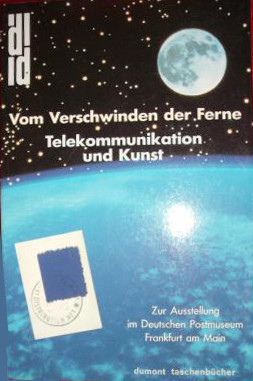David Green, Joanna Lowry (eds.): Stillness and Time: Photography and the Moving Image (2005)
Filed under book | Tags: · cinema, film, film theory, image, photogram, photography

“This collection of essays by leading photographic and film theorists considers the changing relationship between the still and moving image in contemporary culture. The photograph has traditionally been seen as a quintessentially still image. Its ability to freeze and hold a moment in time has been the source of its peculiar fascination and the foundation of much of the theoretical discussion about it. New technological developments in digital media, however, have fundamentally altered the ways in which we think about photography, in particular forcing us to reconsider our assumptions about the still and the moving image and their relationships to differing conceptions of time. Amongst the topics addressed in these essays are: the work of artists who extend the still image in time through the use of video or narrative sequencing; the aesthetic and philosophical analyses of stasis; the place of the pose and tableau in contemporary photography and film; the iconography of photography in cinema; the notion of the cinematic fragment and cultural memory.”
With essays by Victor Burgin, David Campany, Mary Ann Doane, Jonathan Friday, David Green, Yve Lomax, Joanna Lowry, Laura Mulvey, Kaja Silverman, Garrett Stewart, and John Stezaker.
Publisher Photoworks / Photoforum, 2005
ISBN 1903796180, 9781903796184
183 pages
Mary Ann Doane: The Emergence of Cinematic Time: Modernity, Contingency, the Archive (2002)
Filed under book | Tags: · afterimage, archive, chronophotography, cinema, contingency, entropy, film, film history, modernity, photography, time, vision

Hailed as the permanent record of fleeting moments, the cinema emerged at the turn of the nineteenth century as an unprecedented means of capturing time—and this at a moment when disciplines from physics to philosophy, and historical trends from industrialization to the expansion of capitalism, were transforming the very idea of time. In a work that itself captures and reconfigures the passing moments of art, history, and philosophy, Mary Ann Doane shows how the cinema, representing the singular instant of chance and ephemerality in the face of the increasing rationalization and standardization of the day, participated in the structuring of time and contingency in capitalist modernity.
At this book’s heart is the cinema’s essential paradox: temporal continuity conveyed through “stopped time,” the rapid succession of still frames or frozen images. Doane explores the role of this paradox, and of notions of the temporal indeterminacy and instability of an image, in shaping not just cinematic time but also modern ideas about continuity and discontinuity, archivability, contingency and determinism, and temporal irreversibility. A compelling meditation on the status of cinematic knowledge, her book is also an inquiry into the very heart and soul of modernity.
Publisher Harvard University Press, 2002
ISBN 0674007298, 9780674007291
288 pages
review (Meredith Morse, Senses of Cinema)
Comment (0)Edith Decker, Peter Weibel (eds.): Vom Verschwinden der Ferne: Telekommunikation und Kunst (1990) [German]
Filed under book | Tags: · art, art history, electricity, photography, suprematism, telegraphy, telematics, television

Published on the occasion of an exhibition held at Deutsches Postmuseum, Frankfurt am Main, from 2 October 1990 until 13 January 1991.
Publisher DuMont Buchverlag, Cologne, 1990
Volume 257 of DuMont Taschenbücher
ISBN 3770127250, 9783770127252
359 pages

